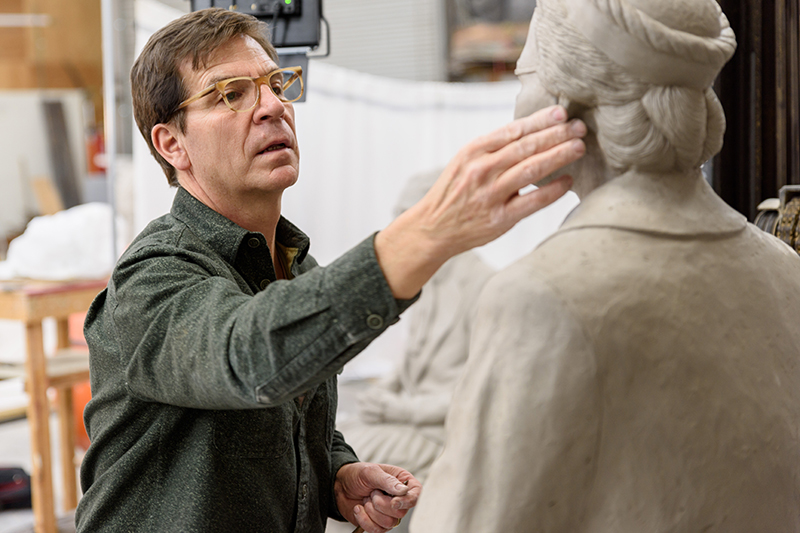
By Stacy Braukman | Published February 22, 2018
Art meets history, inspiring learning — and courage.
An Alabama native and longtime resident of Detroit, Michigan, Rosa Parks probably never set foot on the Georgia Tech campus. But her tireless activism for racial and economic justice cannot be confined to a single geographical location, decade, or movement. As with all great heroes, her life and work are transcendent.
Interactive Art
On April 5, coinciding with the 50th anniversary of the assassination of Martin Luther King Jr., a new piece of public art will be unveiled at Georgia Tech. Titled Continuing the Conversation, the sculpture depicts Rosa Parks at age 42 — the year her courageous act helped launch the Montgomery bus boycott and sparked a movement that would reshape the nation — and at age 92, the year she died. They sit across from each other, an empty seat between them, inviting passersby to join in.
Atlanta sculptor Martin Dawe came up with the concept a few years ago, and he shared it with Madison Cario, director of Tech’s Office of the Arts, and Rafael L. Bras, provost and executive vice president for Academic Affairs and the K. Harrison Brown Family Chair. The piece, they agreed, would be a perfect fit for Georgia Tech.
“It is important to keep this history alive, because the conversation that Rosa Parks carried, with herself and with the people of the United States, needs to continue,” says Bras. “I think we are obliged to remind and educate our students of that history and challenge them to do the same.”
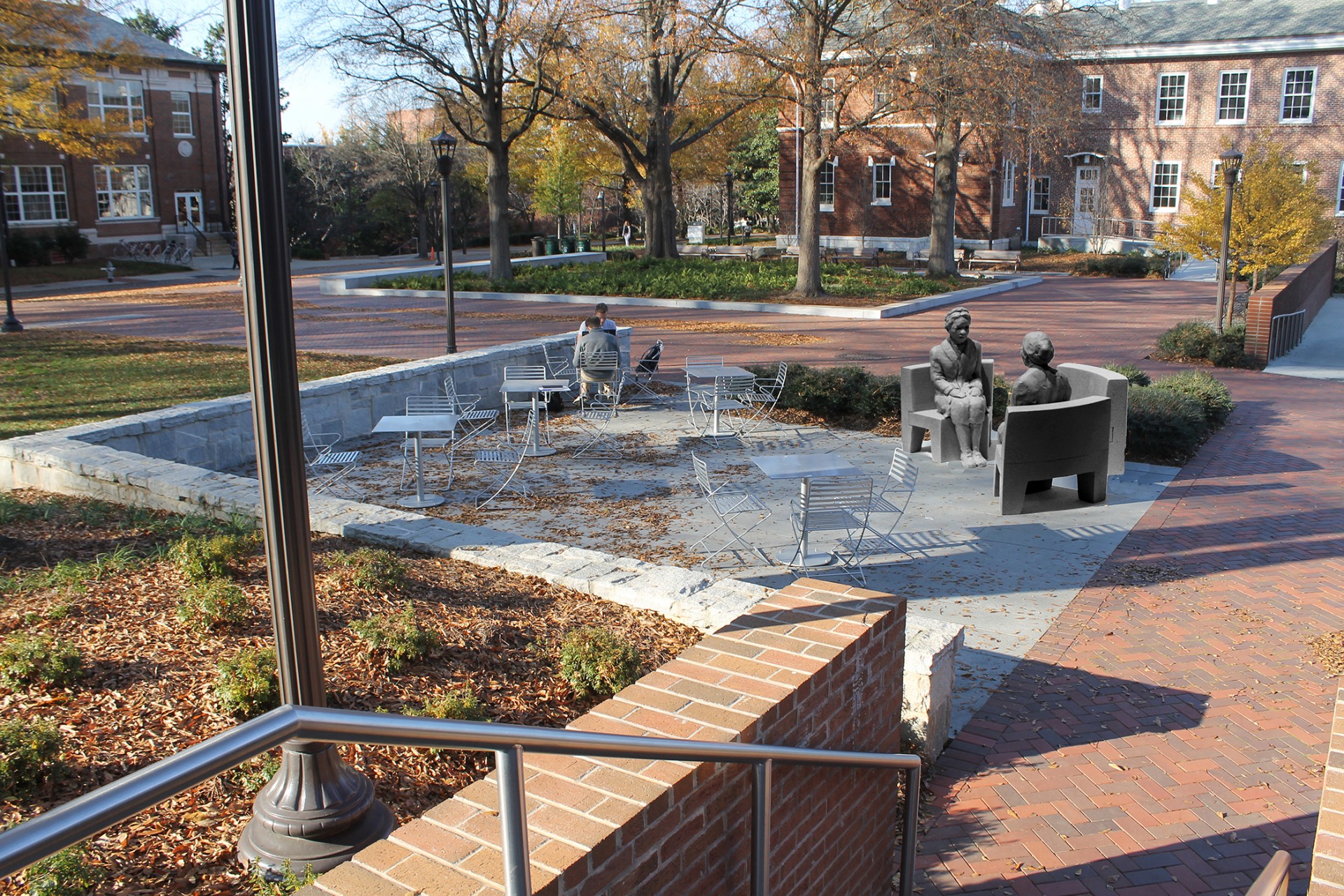
Continuing the Conversation will have a permanent home in Harrison Square.
Life Lessons
Looking for philanthropic support to bring the project to fruition and the sculpture to campus, Bras reached out to dedicated Tech supporters and alumni Rod Adkins, a former IBM executive, and his wife Michelle Adkins, a retired certified public accountant and internal auditor. The couple said yes almost immediately.
“It felt right,” Rod Adkins explains. “It felt like it integrated all of the things we stand for. We are really proud that it’s going to be on the campus of Georgia Tech.”
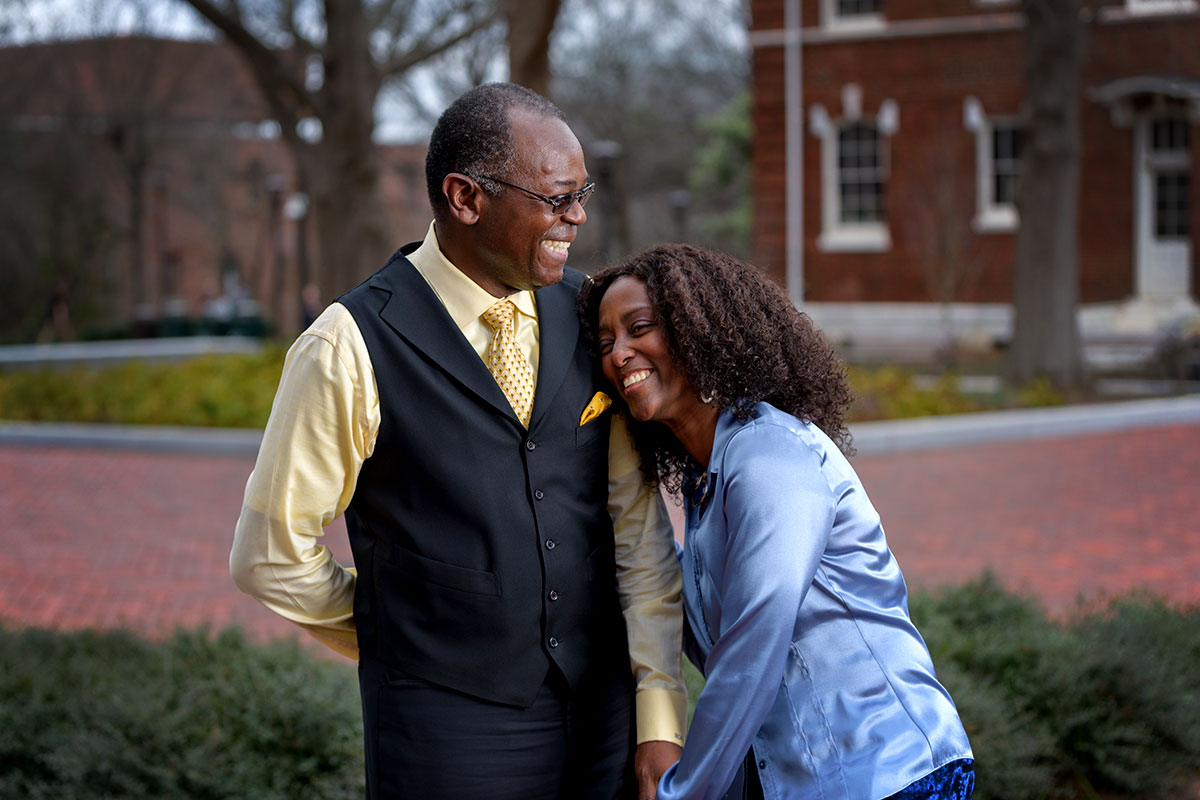
Rod and Michelle Adkins's philanthropy is bringing art — and history — to campus.
“She wasn’t tired, and she wasn’t old,” Michelle Adkins observes about Parks’s refusal in 1955 to relinquish her seat to a white passenger on a segregated bus in Montgomery, Alabama — an act for which she was arrested and jailed.
“She was tired of giving in. That lesson in itself is good for our young generation: It’s important to stand up for what you believe in. Fight to make a difference and to make your lives better. I think that’s something that Tech students and the Atlanta community — all people in general — can take a lesson from.”
For Cario, the Parks statue “is remarkable, in that it allows the entire campus community to reflect on how the action of one person can have tremendous impact. It illuminates history and welcomes us to become a part of it.”
A Lifetime of Activism
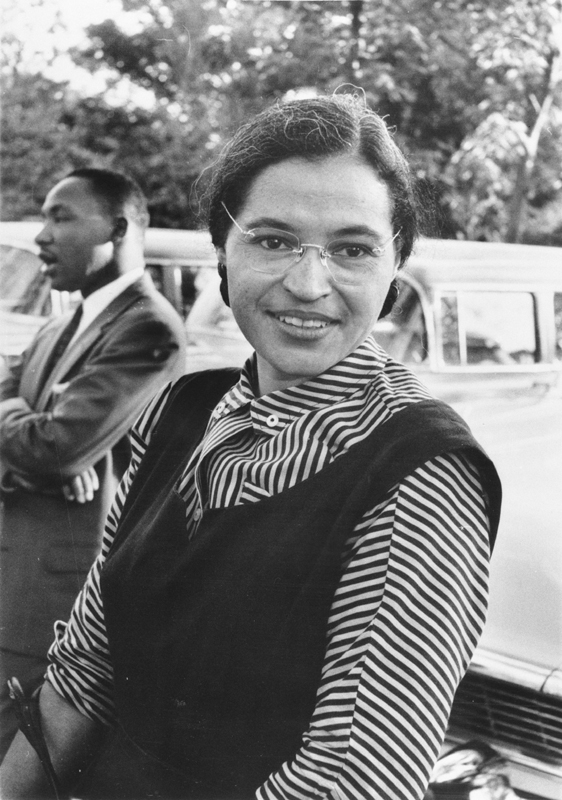
Rosa Parks and Martin Luther King Jr., Montgomery, Alabama, ca. 1955.
And that history, encompassing much more than a single act of conscience, is extraordinary. Beginning in 1943, as secretary of the Montgomery branch of the NAACP, Rosa Parks worked with activists like Ella Baker, E.D. Nixon, and Septima Clark on voter registration, citizenship education, anti-lynching legislation, and school desegregation. She was serving as president of the local NAACP Youth Council at the time of her arrest on the city bus.
On the evening of December 1, 1955, Parks was not the first African-American to be punished for resisting the humiliating treatment that had been so commonplace since the city instituted racial segregation in public transportation more than 50 years earlier. For decades, black men (including World War II soldiers and veterans), women, and teenagers had been arrested, beaten, and even shot for refusing to follow the rules that mandated standing if the white section was full and sometimes — depending on the whim of white drivers — exiting and re-boarding through the back door.
That night, she said no. And her act of resistance sparked a successful bus boycott that lasted 381 days, catapulted Martin Luther King Jr. into a national leadership role, and galvanized a mass movement. Parks later moved to Detroit with her husband when, ostracized by the white establishment, both were unable to find work in Montgomery. Until her death in 2005, she lived a life committed to racial justice and human rights. In speeches given across the country and through her community work, Parks critiqued systemic racial inequality in housing, jobs, and schools; supported organized labor; and advocated the teaching of black history, in part, to keep the movement alive.
The Rosa Parks sculpture will be located in Harrison Square, near Tech Tower and Cherry Street. The plaza was named for Tech’s sixth president, Edwin D. Harrison, who served from 1957 to 1969. During his tenure, in 1961, the Institute became the first major university in the Deep South to desegregate without a court order. “It is the right thing to do,” he said, even as most whites in the city, state, and region continued to cling fiercely to Jim Crow.
The Artist
Dawe, who owns Cherrylion Studios in Midtown Atlanta, has been a professional sculptor since the early 1980s. Most recently, he created an eight-foot bronze statue of Martin Luther King Jr. on the grounds of Georgia’s state capitol building, an experience he describes as “amazing.” He notes with awe (and perhaps a touch of glee) that King is now sharing this powerful symbolic square footage with, among others, former governors John B. Gordon, a leader in the post-Civil War Ku Klux Klan, and Herman Talmadge, a staunch opponent of desegregation in the 1950s and ’60s.
He is happy knowing the Parks statue will live at Georgia Tech. Though a graduate of Georgia State University, Dawe apprenticed for eight years with Tech architecture professor and sculptor Julian Harris, also a Georgia Tech alumnus. “My heart is there, because that’s really where my career started."
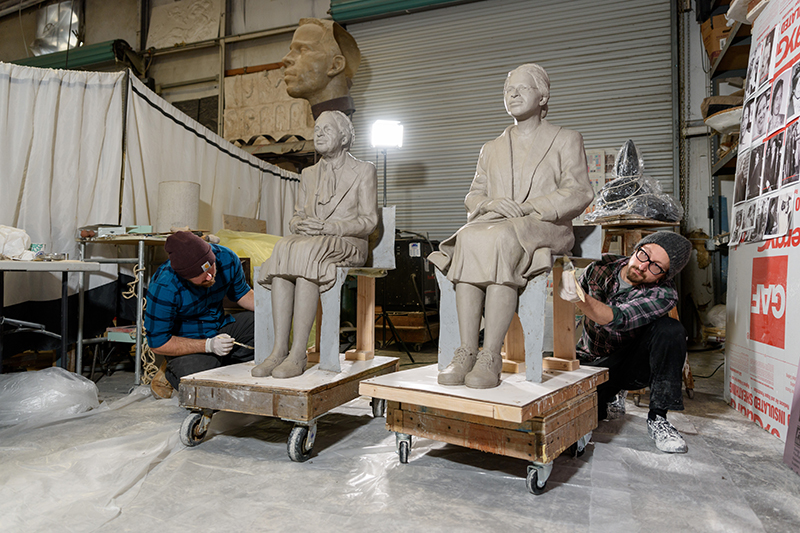
The piece itself began as 300-400 pounds of clay. Dawe and his team sculpted it in six weeks, and then painted multiple layers of rubber over the clay, making a mold a quarter of an inch thick. The rubber mold was shipped to a bronze foundry in Utah. Since then, Dawe has been working with a quarry in Elberton, Georgia, to cut the granite out. He will travel to the foundry to oversee the final stages of production, and the sculpture will be sent back to Atlanta for the April 5 dedication.
A Model of Courage
Rod and Michelle Adkins are hoping the piece will inspire current and future generations of Tech students to learn more about Rosa Parks and the movement she helped to foment, and to discover their own courage as they make their way in the world.
And what do they imagine a young Rosa Parks might say to an older Rosa Parks, or vice versa? “It would probably be about reflecting on our past — but also anticipating and embracing, with excitement, how we are going to shape the future.”


